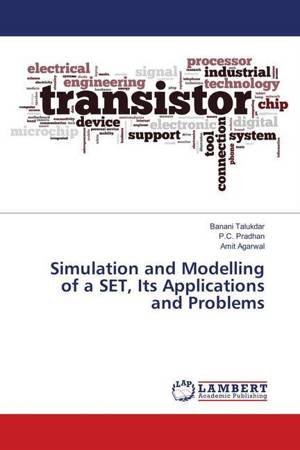
- Afhalen na 1 uur in een winkel met voorraad
- Gratis thuislevering in België vanaf € 30
- Ruim aanbod met 7 miljoen producten
- Afhalen na 1 uur in een winkel met voorraad
- Gratis thuislevering in België vanaf € 30
- Ruim aanbod met 7 miljoen producten
Zoeken
Simulation and Modelling of a SET, Its Applications and Problems
Banani Talukdar, P. C. Pradhan, Amit Agarwal
Paperback | Engels
€ 63,95
+ 127 punten
Omschrijving
The world goes round a transistor. The transistor is the bedrock of the processor. In the year 1947, the BJT was invented. CMOS which has a compact size and is quite faster in operation came into being in order to supersede the BJT. Subsequent to the invention of the MOSFET in the 1970s, it has been the most prevalent semiconductor device. Owing to the fact that MOSFETs can be effortlessly assimilated into ICs, they have become the heart of the growing semiconductor industry. The need to procure low dissipation, high operating speed and small size requires the scaling down of these devices. This fully serves the Moore's Law. But scaling down comes with its own set of drawbacks which can be substantiated as Short Channel Effect.Hence, single electron transistors came into the picture. The configuration of a SET is similar to that of a MOSFET. In this book, the theoretical groundwork of SET is presented along with its simulation in MATLAB.
Specificaties
Betrokkenen
- Auteur(s):
- Uitgeverij:
Inhoud
- Aantal bladzijden:
- 180
- Taal:
- Engels
Eigenschappen
- Productcode (EAN):
- 9783659902550
- Uitvoering:
- Paperback
- Afmetingen:
- 150 mm x 220 mm

Alleen bij Standaard Boekhandel
+ 127 punten op je klantenkaart van Standaard Boekhandel
Beoordelingen
We publiceren alleen reviews die voldoen aan de voorwaarden voor reviews. Bekijk onze voorwaarden voor reviews.








